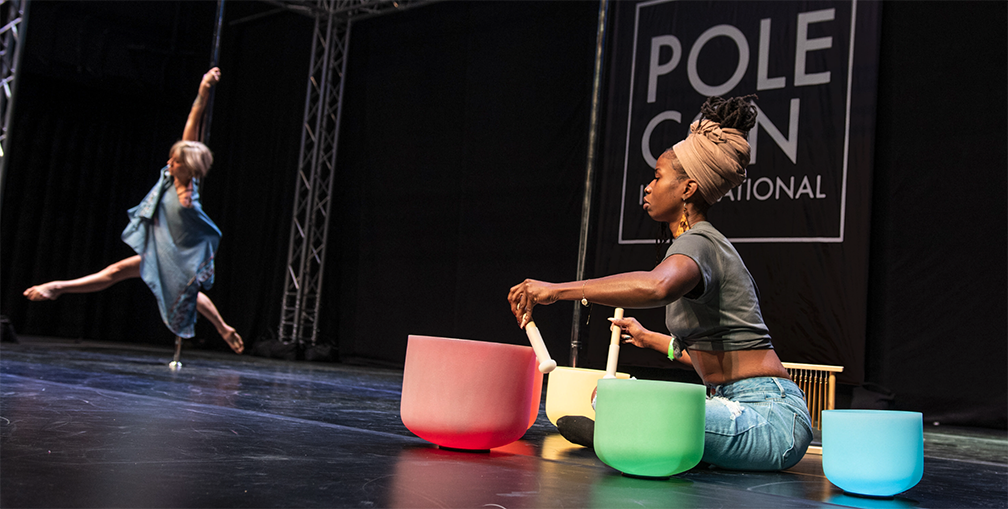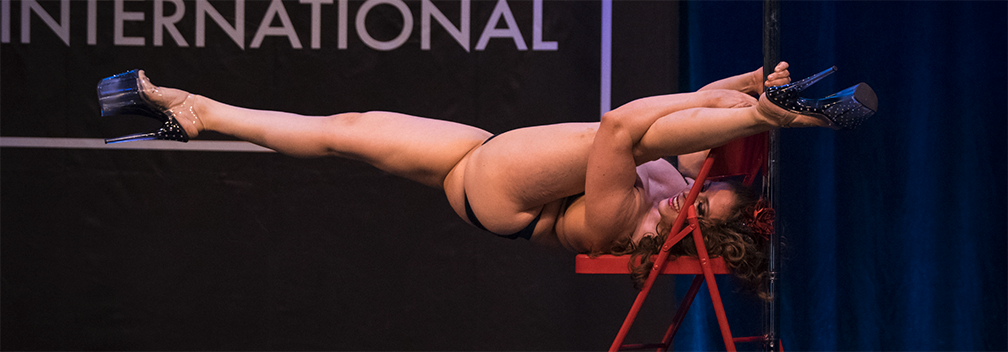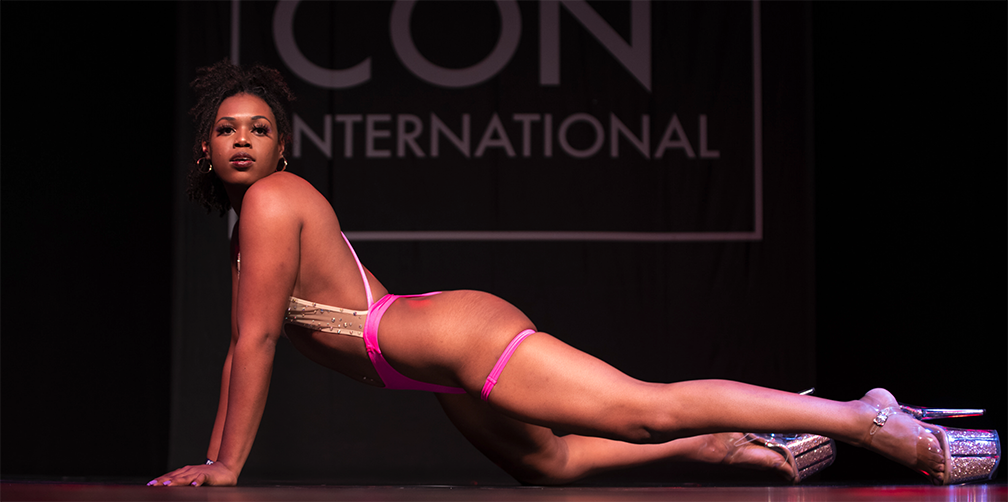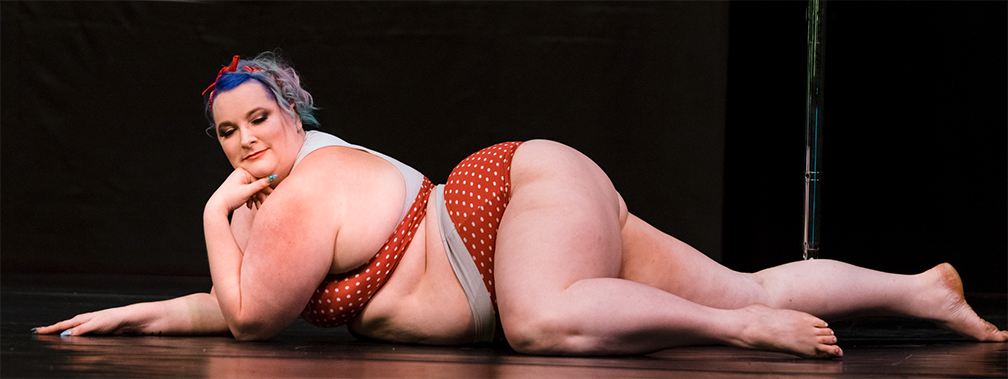Get Your Booty to the Poll (GYBTTP) was a 2020 campaign that used pole dance…

How’s Your Recovery?
You’re doing everything right—Training both sides. Eating well. Hitting the gym and the studio.
…But you’re not progressing.
You’re tired all the time. Moves that once seemed hard are *still* hard.
“Where are my gainz?!!” You scream at an Instagram full of “Transformation Tuesdays.”
Sound like you?
Yea, this was me too.
Me, I’m the problem it’s me
I teach a lot; I work a lot.
I saw my students progressing — so something I was teaching was working but why was I plateauing or in some cases sliding back in my own strength and flexibility?
I started researching online and booking privates with pole-focused physios to understand.
Here is what I learned:
Many aerialists are driven in their day jobs.
They’re competitive either with themselves or with the world or both and that go-go-go personality makes it hard to “switch off.”
There’s also no “off season” for aerial and circus.
We can work, train, teach, compete, and perform at any time, all the time. If we’re not performing, then we might teach more, if we’re not teaching then we’re probably performing or competing.
There’s no built-in rest cycle and often no periodization, a common fitness-based way to structure your workouts over a set period of time, to our training.
We teachers must create and enforce these cycles which is hard when you start to add in personal finances and the struggle to maintain a regular schedule for you, your students, and your family.
Things to explore
Different things work for different people. And I hate telling you that.
I *wish* there was a “magic pill” that I could give you to make this all “work” but there is not.
You will have to experiment somewhat to find what is the best thing you need to improve recovery.
Generally, look at your life and how you’re feeling. Start taking notes and notice if you can make any correlations between your actions and habits and how well you feel, or don’t feel.
Here are some ideas to get you started:
- How’s your sleep? Do you feel rested when you wake up? Are you giving yourself enough time to fall asleep and then stay asleep? How old is your mattress? How old is your pillow? We all need sleep to recover and rebuild. It’s like a “wash cycle” for your brain. Everyone needs a different amount of sleep which may change as you age or if you’re recovering from an injury or intense training.
- Are you drinking “enough” water? Switch out one of your other regular beverages with water if you’re answer is “I’m not sure.”
- Do you foam roll? Or see a sport-focused massage therapist regularly (like once a month)? If not, try instituting a regular foam rolling/myofascial release/massage practice and see how that makes you feel.
- Are you *really* eating well for your workouts and lifestyle? With plenty of protein (plant or animal) and with ingredients you can actually pronounce? And if you are, maybe something you’re eating doesn’t agree with you and is impacting your recovery. You might have a sensitivity to a food – common culprits are sugar, gluten, and dairy. Take a hard look at your regular diet and ask for help from a nutritionist.
- When was your last rest day? For real. Are you taking at least one rest day per week? When was the last time you took a whole week off pole? I promise you won’t forget how to pole dance if you start building in some rest days.
- Are you following a specific conditioning plan? Or are you just doing random things and hoping they work? When you first start, getting to the studio regularly is awesome. To progress more and address any potential mobility issues from modern life, you’ll likely need to do some off the pole conditioning. You can figure this out yourself using books like Neola Wilby’s “Strength and Conditioning for Pole” or you can hire a pole-focused trainer. Even a muggle trainer at your local gym can help if you show them videos of what you’re trying to do.
- Have you tried meditation? Now this one was on my list to try for a long time and finally through a strange series of events, I found myself in Kathmandu buying a Tibetan healing bowl. Bigger than singing bowl you might more easily find, this one you put on your head and bang it like a gong. I know it sounds crazy but immediately my sinuses cleared up and my neck muscles relaxed so if for nothing else, I thought it could help during DC’s hellish spring blooming season. There are many, many types of meditation or other ways to manage stress, there might be one that works for you too!
- Heard of heart rate variability? It is the rate between heart beats and is now a common tool to measure recovery. There are lots of apps and wearables that can give insight into how you might be recovering and even inform you how hard you might want to train that day. If you poorly recovered the night before, maybe don’t go so hard that day.
Don’t stop; get it, get it
You must make things a habit.
There is no one size fits all approach, and nothing is going to switch after doing it once. Your body needs time to adjust to your new expectations.
Track your progress in a way that is meaningful to you.
Try quantitative things like the speed of your climbs, how many inverts you can do in a minute or how flat your splits are AND also try tracking qualitative things like how you feel and how often you had to cancel going to class because you were exhausted.
Don’t forget about self-care!
Self-care, like recovery, is one of those phrases that’s often misunderstood and thrown around in the same diminishing conversations as avocado toast and pedicures.
Self-care is taking time to do something you enjoy or is a break in your normal grind. It’s whatever you do that gives you a tiny flutter of excitement as soon as you’ve decided to do it and that excitement comes back the day you get to do it. Maybe you can do it regularly and maybe you wait all year for it.
Recovery is complicated and like other parts of our lives, so many things (eating, sleeping, calming the mind, feeding the soul) are intertwined in the complicated fabric that is improvement. It’s hard to know where to focus and not everyone can hop on a plane to Kathmandu to get a Tibetan healing bowl (LOL)
Try a few things and monitor your progress.
>> If it’s working, then keep doing it! And if it’s not, try something else on the actionable tips list (we could all probably use a little more sleep!).
Latest posts by Colleen (see all)
- PoleCon 2025 Updates from the Survey - June 20, 2025
- PoleCon Hub Page: MORE Black Voices - June 13, 2025
- PoleCon 2025: Recap - June 4, 2025


